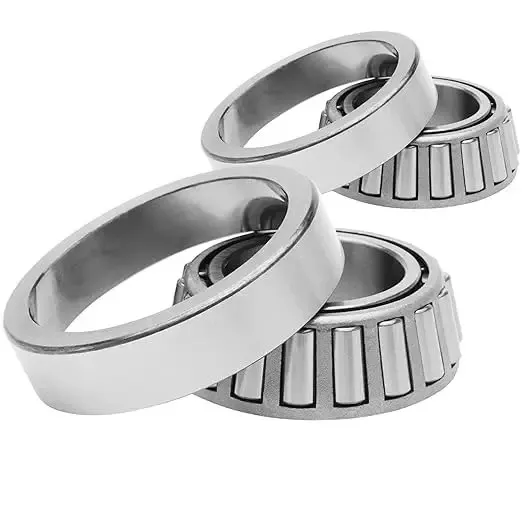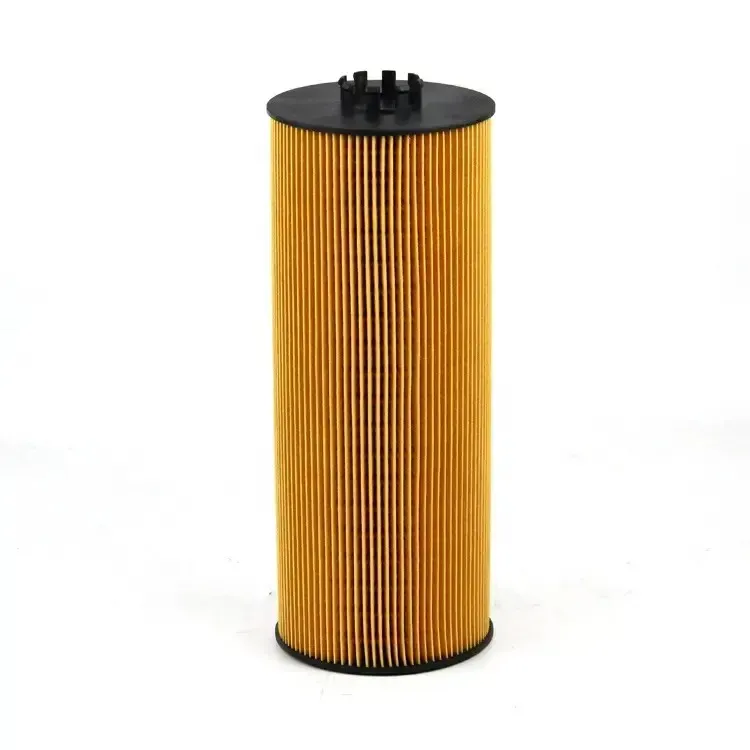The Essential Guide to Truck Parts: Understanding Key Components and Their Importance
2024-10-25
Trucks are complex machines that play a vital role in industries like logistics, construction, agriculture, and more. From hauling goods across vast distances to moving heavy equipment, trucks must be durable, reliable, and capable of handling immense loads. Maintaining a truck means understanding the essential parts that keep it running smoothly. In this guide, we’ll cover the primary truck parts, their functions, and why they matter for performance and safety.

1. Engine and Engine Components
The engine is the heart of any truck, providing the power needed to move heavy loads efficiently. Diesel engines are most common in commercial trucks due to their high torque and fuel efficiency.
- Turbochargers: Turbochargers compress air to increase engine efficiency, boosting power without increasing engine size. Essential for larger trucks, turbochargers improve acceleration and fuel economy.
- Fuel Injectors: These components deliver fuel into the engine’s cylinders, ensuring a precise air-fuel mixture for combustion. Clean, well-maintained injectors are vital for fuel efficiency and engine performance.
- Oil Filters: Engine oil lubricates and cools engine parts. Oil filters keep impurities out of the engine, prolonging its life and reducing wear.
2. Transmission System
The transmission system transfers power from the engine to the wheels, allowing the truck to move at different speeds.
- Gearbox: The gearbox houses multiple gears that allow the truck to adapt to different driving conditions. Heavy-duty trucks often use manual transmissions, while light-duty trucks may use automatic transmissions.
- Clutch: For manual transmissions, the clutch disengages the engine from the wheels, allowing the driver to change gears smoothly.
- Differential: The differential distributes power from the transmission to the wheels, enabling smooth turns. Maintenance of the differential is essential for balanced power distribution and longer tire life.
3. Brake System
Truck brakes are crucial for stopping large loads safely. Trucks typically use air brakes, which rely on compressed air rather than hydraulic fluid.
- Brake Pads and Rotors: Brake pads create friction against rotors to slow down or stop the truck. Regular inspection and replacement are necessary, as worn brake pads can damage the rotors and reduce braking efficiency.
- Air Compressor: In air brake systems, the air compressor generates compressed air, essential for activating the brakes. Faulty compressors compromise braking performance, making them a top priority in maintenance.
- Slack Adjusters: These devices adjust the distance between the brake pads and wheels, maintaining proper brake clearance. Regular adjustments prevent brake dragging and improve safety.
4. Suspension System
The suspension system supports the truck's weight, provides stability, and absorbs shocks from uneven roads.
- Leaf Springs: Leaf springs are commonly used in truck suspensions to absorb road shocks and support heavy loads. Regular checks help prevent breakage, which can cause loss of vehicle control.
- Shock Absorbers: Shock absorbers reduce vibration and improve handling. Worn shocks reduce ride comfort and can lead to premature wear on other parts.
- Air Suspension: Common in modern trucks, air suspension uses air-filled bags that automatically adjust to load changes, enhancing stability and ride comfort.
5. Steering System
The steering system allows the driver to control the truck's direction accurately.
- Steering Gearbox: The gearbox converts the rotational movement of the steering wheel into linear motion to control the wheels. A worn gearbox can lead to handling issues and safety concerns.
- Tie Rods: Tie rods connect the steering system to the wheels, helping turn the truck. Damaged tie rods cause alignment issues and can lead to tire wear or loss of control.
- Power Steering Pump: This pump makes steering easier by providing hydraulic pressure. A failing power steering pump makes the steering wheel harder to turn, which can be dangerous in tight spaces or rough terrain.
6. Electrical System
A truck’s electrical system powers the lights, controls, ignition, and other electronic components.
- Batteries: Heavy-duty batteries are essential for starting the engine and powering electrical systems. Regular checks ensure that the battery can handle the demands of starting and running electronics.
- Alternator: The alternator charges the battery and powers electrical components while the engine is running. A failing alternator drains the battery, potentially leaving the truck without power.
- Lights: Headlights, brake lights, turn signals, and interior lights are essential for safe operation. LED lighting is now commonly used for its longevity and visibility.
7. Cooling System
The cooling system prevents the engine from overheating, which is essential in heavy-duty trucks that operate for extended periods.
- Radiator: The radiator disperses heat from the engine coolant, allowing the engine to maintain a safe temperature. Regular coolant flushes and checks prevent radiator corrosion and coolant leaks.
- Water Pump: This component circulates coolant through the engine. A failing water pump can cause overheating, which can damage the engine.
- Thermostat: The thermostat regulates the engine’s temperature, allowing it to reach an optimal operating temperature. A faulty thermostat can lead to overheating or suboptimal engine performance.
8. Fuel System
The fuel system stores and delivers fuel to the engine efficiently.
- Fuel Tank: The fuel tank stores the diesel or gasoline. It should be inspected for leaks, as even small leaks can be hazardous.
- Fuel Pump: The fuel pump delivers fuel from the tank to the engine. A weak or faulty pump reduces engine performance.
- Fuel Filter: This component removes impurities from the fuel. Regular replacement ensures that clean fuel reaches the engine, reducing wear and tear.

9. Tires and Wheels
Tires and wheels directly impact the truck’s performance, stability, and fuel efficiency.
- Tires: Truck tires are designed for durability and load-bearing capacity. Rotating and inspecting tires regularly reduces wear and extends their lifespan.
- Wheel Bearings: Bearings help reduce friction between the wheels and axle. They should be greased and checked to prevent friction, which can lead to overheating.
- Rims: Rims should be inspected for cracks or damage, as faulty rims compromise the truck's handling and safety.
10. Body and Frame
The body and frame form the structural foundation of the truck.
- Chassis Frame: The chassis is the backbone, supporting the truck’s components and load. Regular inspection of the chassis ensures it can handle heavy loads without deforming.
- Cabin: The cabin houses the driver and controls. Modern cabins include features like air conditioning, GPS systems, and ergonomic seats, enhancing driver comfort and safety.
- Cargo Area: Trucks have different cargo areas depending on their purpose (flatbed, box, tanker, etc.). Regular maintenance keeps cargo secure and prevents leaks or damage.
Why Regular Maintenance Matters for Truck Parts
Routine maintenance of truck parts is crucial for longevity, safety, and efficiency. Neglecting even small components like filters or bearings can lead to larger issues that may cause breakdowns, costly repairs, or safety hazards. Trucks that are well-maintained offer better fuel economy, reduce downtime, and ensure compliance with safety regulations.
---
Final Thoughts
Understanding the key truck parts and their functions helps operators and fleet managers prioritize maintenance, optimize performance, and extend the lifespan of their vehicles. Whether you're driving cross-country, hauling heavy materials, or transporting goods within city limits, a reliable truck is essential—and that reliability starts with well-maintained parts.


